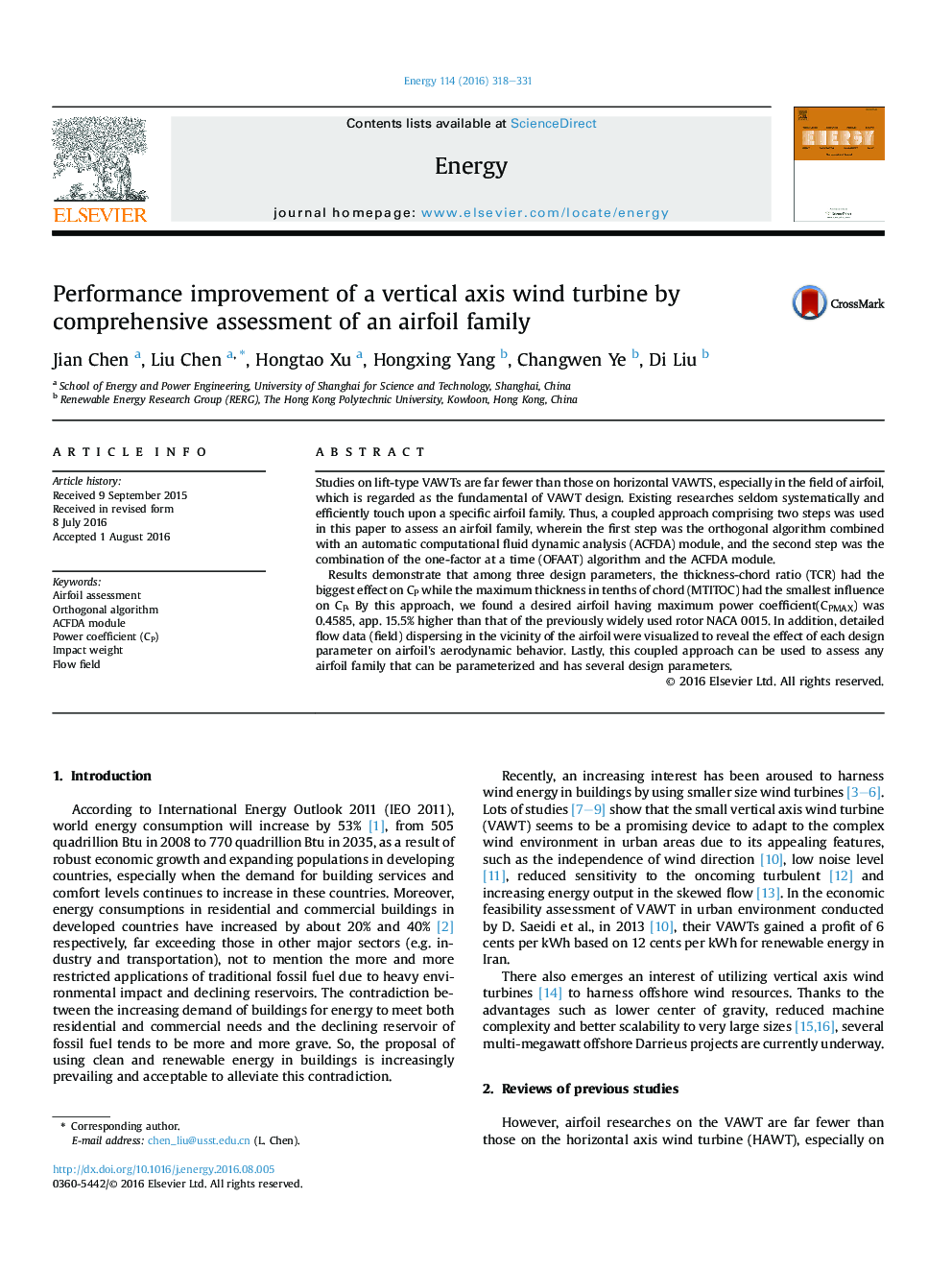| Article ID | Journal | Published Year | Pages | File Type |
|---|---|---|---|---|
| 8072849 | Energy | 2016 | 14 Pages |
Abstract
Results demonstrate that among three design parameters, the thickness-chord ratio (TCR) had the biggest effect on CP while the maximum thickness in tenths of chord (MTITOC) had the smallest influence on CP. By this approach, we found a desired airfoil having maximum power coefficient(CPMAX) was 0.4585, app. 15.5% higher than that of the previously widely used rotor NACA 0015. In addition, detailed flow data (field) dispersing in the vicinity of the airfoil were visualized to reveal the effect of each design parameter on airfoil's aerodynamic behavior. Lastly, this coupled approach can be used to assess any airfoil family that can be parameterized and has several design parameters.
Keywords
Related Topics
Physical Sciences and Engineering
Energy
Energy (General)
Authors
Jian Chen, Liu Chen, Hongtao Xu, Hongxing Yang, Changwen Ye, Di Liu,
